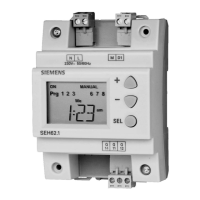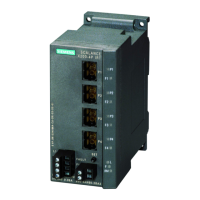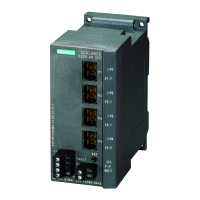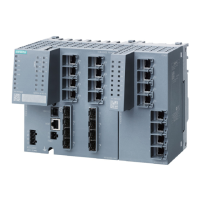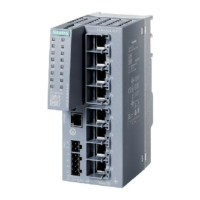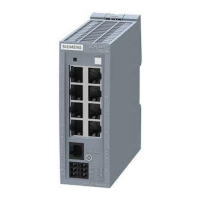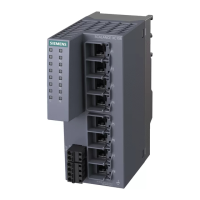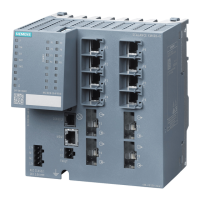Do you have a question about the Siemens SE and is the answer not in the manual?
Contact Siemens for field service, technical guidance, and customer service issues.
Verify correct switch installation and inspect for shipping damage to insulators, hot parts, and components.
Check interrupters for damage and ensure all required parts like connectors and brackets are present.
Drill mounting holes, install bolts, and mount the switch securely without twisting the base.
Verify correct latch overlap and position when the switch is fully closed.
Ensure interrupter lever is correctly positioned and free of contact with blade end when closed.
Confirm blade end casting makes metal-to-metal contact with interrupter lever before leaving jaw assembly.
Ensure interrupter trips the load while lever arm is in contact with blade end.
Check lever clears push bar and springs back to cocked position for next operation.
Verify push bar picks up lever minimum 0.500 inch during switch closing.
Ensure push bar maintains minimum 0.500 inch clearance from yoke during closing.
Confirm interrupter resets (cocks) for the next opening operation after switch closure.
Check blade rotates freely and closes completely without obstruction.
Operate switch periodically, clean and lubricate jaw contacts and blade end with approved grease.
Lubricate the hinge with factory approved lubricant if blade rotation requires light effort.
Check interrupter action; clean and lubricate push rod if stiff or corroded.
Inspect insulators for cracks, breaks, or flashovers.
Visually inspect hot parts, including the interrupter, for any damage.
Check for loose or missing hardware, particularly mounting and terminal pad bolts.
Visually inspect terminal pad areas for corrosion or signs of overheating.
Guidelines for recycling metals, plastics, electronics, cables, motors, and batteries.
Contact Siemens for field service, technical guidance, and customer service issues.
Verify correct switch installation and inspect for shipping damage to insulators, hot parts, and components.
Check interrupters for damage and ensure all required parts like connectors and brackets are present.
Drill mounting holes, install bolts, and mount the switch securely without twisting the base.
Verify correct latch overlap and position when the switch is fully closed.
Ensure interrupter lever is correctly positioned and free of contact with blade end when closed.
Confirm blade end casting makes metal-to-metal contact with interrupter lever before leaving jaw assembly.
Ensure interrupter trips the load while lever arm is in contact with blade end.
Check lever clears push bar and springs back to cocked position for next operation.
Verify push bar picks up lever minimum 0.500 inch during switch closing.
Ensure push bar maintains minimum 0.500 inch clearance from yoke during closing.
Confirm interrupter resets (cocks) for the next opening operation after switch closure.
Check blade rotates freely and closes completely without obstruction.
Operate switch periodically, clean and lubricate jaw contacts and blade end with approved grease.
Lubricate the hinge with factory approved lubricant if blade rotation requires light effort.
Check interrupter action; clean and lubricate push rod if stiff or corroded.
Inspect insulators for cracks, breaks, or flashovers.
Visually inspect hot parts, including the interrupter, for any damage.
Check for loose or missing hardware, particularly mounting and terminal pad bolts.
Visually inspect terminal pad areas for corrosion or signs of overheating.
Guidelines for recycling metals, plastics, electronics, cables, motors, and batteries.
The provided document is an instruction manual for Hookstick disconnect switches manufactured by Siemens. These switches are designed for medium voltage applications and include various types: SE, SEL, SER, LER, E, EF, B-1, B-2, EH, EHL, and EHTT. The manual covers installation, check-out, and maintenance instructions, emphasizing safety and proper handling.
Hookstick disconnect switches are high-voltage air disconnecting and load interrupter switches. Their primary function is to isolate sections of an electrical circuit for maintenance, repair, or to reconfigure the power distribution system. When equipped with interrupters, they can also interrupt load currents, allowing for safe opening under load conditions. The "hookstick" designation implies that these switches are operated manually using an insulated hookstick, providing a safe distance for the operator from energized parts. The mechanical action involves a blade that rotates to make or break contact with jaw assemblies, and for interrupter-equipped models, a lever mechanism that triggers the interrupter to extinguish the arc during load interruption.
While the manual does not explicitly list detailed technical specifications like voltage ratings, current ratings, or insulation levels, it provides crucial operational and mechanical tolerances that are integral to the switch's performance and safety.
Operational Tolerances (for interrupter-equipped switches):
General Construction:
The manual outlines several key features related to the usage of these hookstick disconnect switches:
The maintenance section provides guidelines to ensure the longevity and reliable operation of the hookstick disconnect switches:

